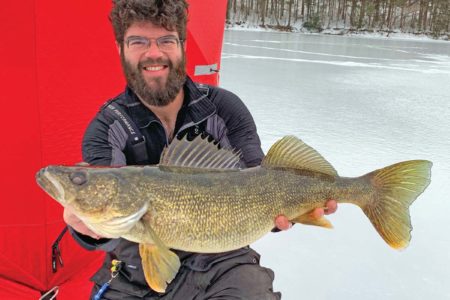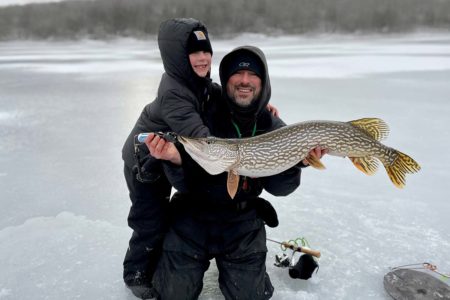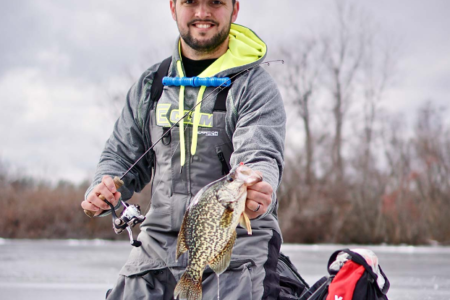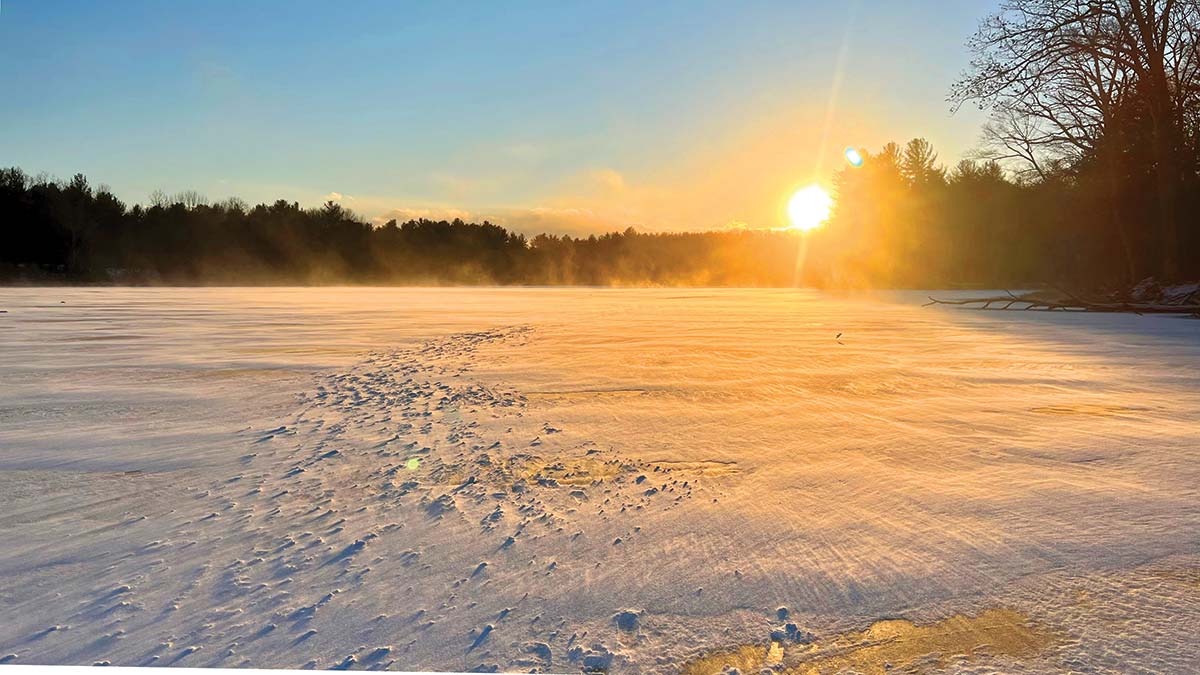
A little research and planning will go a long way toward making your next hardwater adventure a success.
This article won’t have all the answers and by no means will it cover every situation you might encounter out on the hardwater. Hopefully this will give you a better starting point, or even a checklist that you can follow when venturing out onto a new body of frozen water, or maybe give you a fresh perspective when fishing your favorite one.
Pre-Planning
Having a plan is the most important part. Make yourself familiar with the structure in the lake, the various depths and any place where there are noticeable changes in the contour – steep drop-offs or wider flats. Getting a lay of the land will help you make smart decisions about where to fish and how the fish are going to relate to structure. If you don’t have a map and you’ve never fished the pond during the spring, summer or fall, a Google search will usually turn up a map or two that can help you dial in on the most likely hot zones. Most New England states’ fisheries websites offer pond maps and information about the species of fish you might catch in each pond.
If probing the internet doesn’t turn up any useable info, don’t sweat it. When I’m scoping out a new body of water the first thing I look at is the banks and surrounding landscape this helps me break the pond down quickly and can also help me make an informed decision when trying to pick a new spot to try on a favorite lake. Oftentimes what you see on the shoreline continues beneath the surface of the water. A sandy beach, a rocky shoreline or even laydowns offer some insights about the bottom composition further from shore and the type of structure that might be available as well.
In addition, the landscape may give you clues about what lies below the ice, a steep, wooded shoreline is likely to continue to drop off quickly and might be littered with fallen trees and branches. A gradually-pitched shoreline with lots of small hills and depressions may also continue under the water – basically, if you read the composition and contour of the land surrounding the body of water as an extension of what’s below the water, you’ll be setting yourself up to understand how the fish might utilize the underwater landscape a lot better.
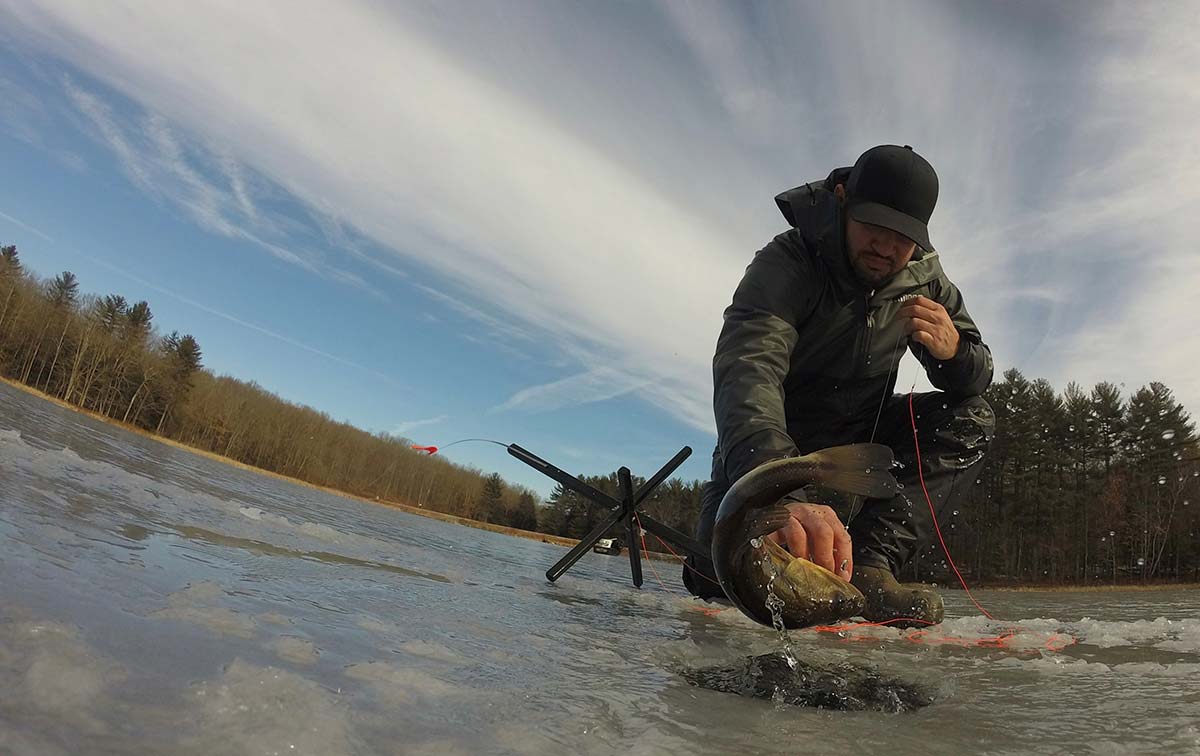
Drilling For Gold
Even when armed with solid map intel and shoreline observation, you’re going to have to drill a lot of holes moving out and away from known structure to find depth. Never feel like you made to many holes in trying to find the perfect spot. I’m constantly making Swiss cheese out of new places I fish. Once your hole is drilled you can check the depth with electronics if you have them and if not, you can send down your sounder.
Dropping a sounder through the hole does two things; it gives you an idea of the depth and also allows you to distinguish the composition of the bottom. A soft landing usually means sand or muck while a clunk or a ‘ding’ reveals rocky or hard bottom, and a bit of resistance when pulling away from the bottom can often mean weeds. All great things to know when ice fishing.
Dialing In A Bite
Keep in mind that all fish always relate to two things. One, some type of structure and two, food meaning bait. If you can find either of the two, you’re in good shape and if you happen to find both you’re in really good shape. Next having an understanding of what you want to catch or plan to catch comes with knowing the species you would like to target. As every species of fish acts differently and relates to certain depths and structures. It’s important to do your homework here. For most warm water species like largemouth, sunfish, and esox species (pike and pickerel), Setting up over weeds in 4 to 12 feet of water will give you a good starting point.
For colder water species like trout or even smallmouth bass. I like to look for drop offs or humps 3 to 40 feet of water, or more, ideally with either sandy or rocky bottom, but mucky bottom is also worth fishing. Probing the water column or setting shiners or even a night crawler at different depths will help you find feeding trout while shiners a few feet off the bottom should connect with smallmouth. The same areas can be jigged with good success. You’ll also find large yellow perch this way. Especially as the season progresses.
Keep in mind weather can also play a big role in getting the fish to eat. I often watch the barometer for drops. Low pressure usually sets off a good feed and it’s almost guaranteed to be a great day on the hardwater. That doesn’t mean fish don’t feed during high pressure. The switch from low to high can often become a bite killer, but constant high pressure for a few days can get fish feeling comfortable again and put them back on the feed.
From there, try to repeat what you had success with, to map out a pattern. A pattern is nothing more than figuring out how the fish are relating to structure that day, where in the water column they’re feeding and what they might be feeding on. And be flexible; patterns can change from one day to the next, so if what was working on Wednesday isn’t working on Saturday, make changes and see if you can figure out the new pattern.
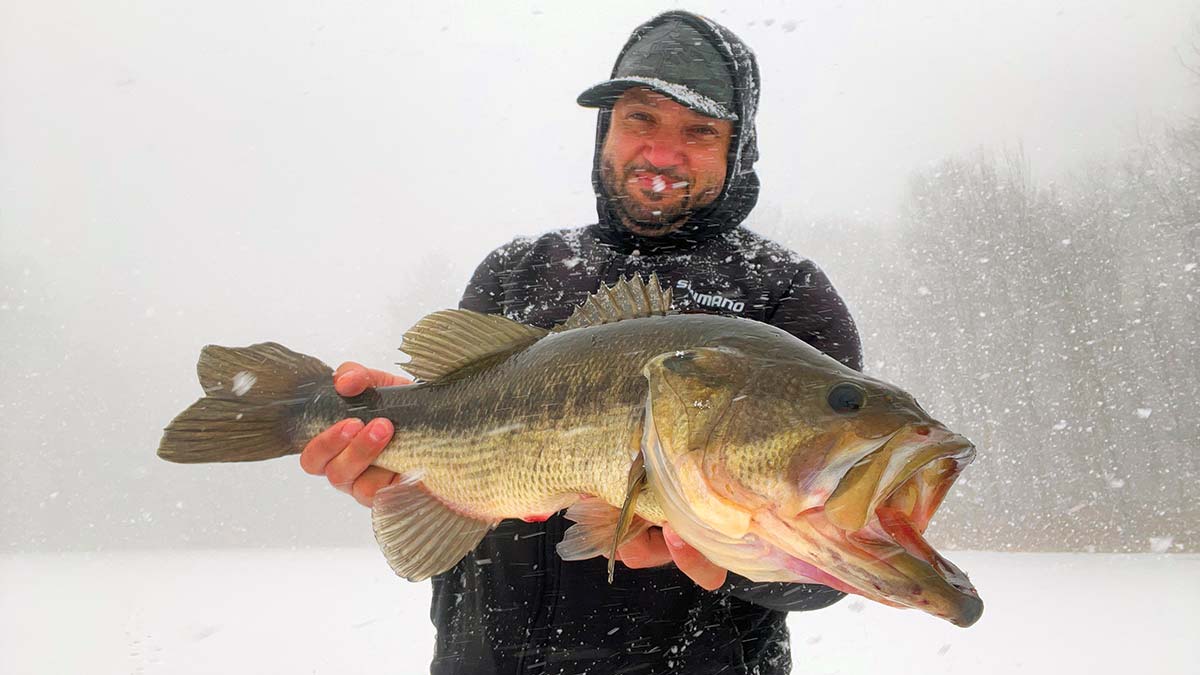
A Multifaceted Attack
Here in my state of Mass you are allowed five tip-ups or holes that you can fish at once. If fishing tip-ups, I like to drill eight holes in the area I plan to fish. This allows me to set-up four tip-ups and jig the other four holes while I wait. This keeps me occupied while i wait for a flag, but it also allows me to look for active fish and may also reveal a hole that’s fishing hot. Remember a hot hole means you have an audience especially when targeting panfish. That means there’s a school of fish that’s attracted to that particular spot, and where there’s a school of fish, a predator is never far away. This presents a great opportunity to drill new hole not far from the lucky hole.
Moving a tip-up that hasn’t gone off closer to the hot hole can ramp things up in a hurry. Or if jigging is your thing, drilling a bunch of holes allows you to cover water and explore around a new spot. Remember to always mark a good spot mentally or in your notes if you keep them. I’m huge on keeping notes and logs on all my fishing trips bad or good. This helps me with success when returning to a body of water or fishing one with similar features.
Another important thing is having good bait. That means your bait should be lively and acclimated to the cold so they don’t go into shock once you send them down below the frozen tundra. I like to keep my shiners in the coldest spot at home where they are not going to freeze but the water will remain cold; this means they will require less oxygen, and also perform better on the ice. This also means gathering or purchasing your bait ahead of time. Mealworms, waxworms and mousies should all be fresh when tipping your jigs to spice things up as well. Tossing dead ones will save the rest from going bad, and also making sure they are stored at proper temps when not being used is also very important.
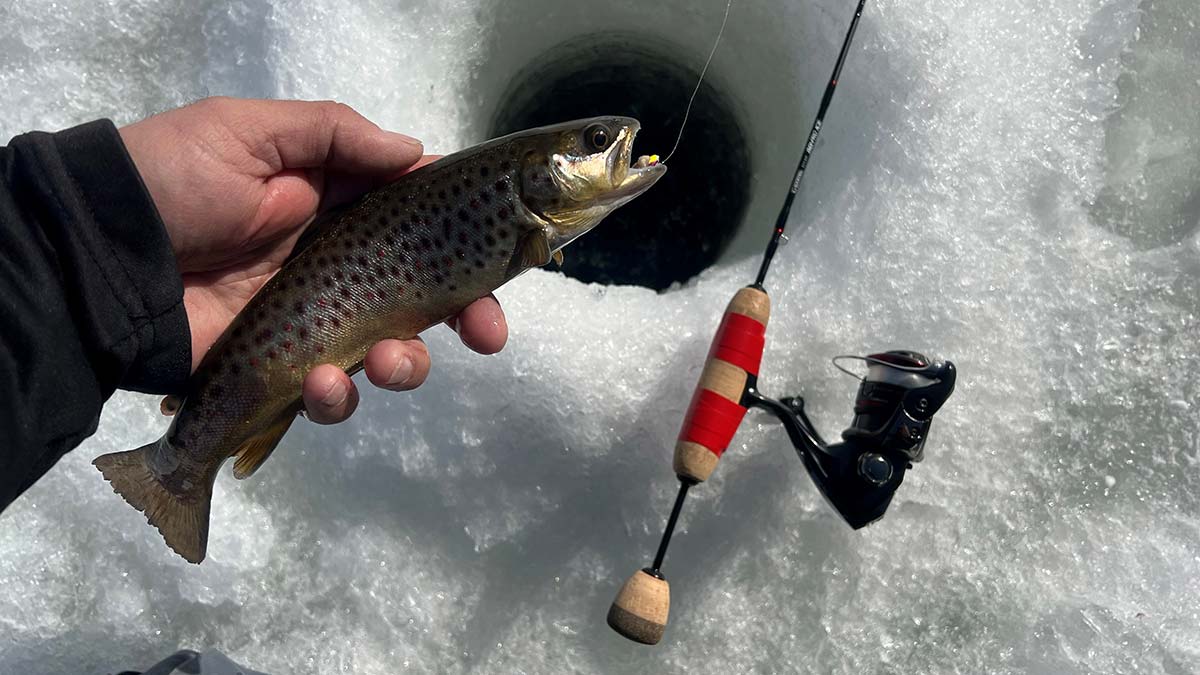
I could keep on with more techniques and strategies, but that would mean writing a book which means less time on the water. I will leave you all with this though. Luck favors the prepared. If you read this article you can clearly see this is what it all boils down to. Consistency comes with preparation in anything we do. Yes you can get lucky, but you can’t always be lucky unless you’re skilled and knowledgeable.
Happy fishing and be safe! Ice fishing can be treacherous and knowing your limits and comfort zone means you get to come back and do it again. Always check the ice on the way out and adhere to ice tables, keep in mind that underwater springs, current and warm or rainy weather can mean changes in ice thickness over a span of just a few feet. Don’t make that next step unless you’re sure it’s safe. But if you practice ice fishing safety and follow these guidelines, you’ll have a very high likelihood of success. Good luck!
